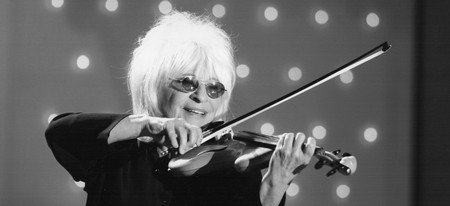How to choose your string instrument?
In the family of bowed string instruments, there are 4 different instruments: the violin, the viola, the cello and the double bass. A string quartet nevertheless consists of 2 violins, a viola and a cello, the double bass being a musical instrument which is most often played without a bow, i.e. by plucking the strings unlike the others which are played mainly by rubbing the strings with a bow.
The violin
The violin is a bowed string musical instrument, made up of several wooden parts (maple, boxwood, ebony, etc.) glued or assembled together. It is an instrument that occupies an important place in the history of Western classical music: great composers wrote for this instrument (concerts, chamber music, symphonic pieces, etc.) or even played it themselves (Vivaldi, Bach, Mozart, etc.), but also in jazz and gypsy music.>
A violin consists of 3 main parts: the sound box, the neck and the strings. The size of the violin varies. Depending on the age but also the size of the musician you will have to choose a different size violin (depending on the size of the arm). So be aware that if your child starts the violin at a young age, you will have to change his instrument several times over the years.
- Between 3 and 5 years old: a 1/32, 1/16, 1/10 or 1/8 violin
- Between 4 and 7 years old: a 1/4 (quarter) violin
- Between 6 and 10 years old: a 1/2 (half) violin
- Between 9 and 11 years old: a 3/4 (three-quarter) violin
- Beyond 12 years old: a whole violin, i.e. a 4/4 violin
There are also models of left-handed violins, as with guitars.
The sound of the violin comes from the body of the violin which amplifies the vibration transmitted by the soul, which in turn returns the vibration of the bridge, transmitted by the string. The importance of the choice of strings is therefore paramount. When you buy a first price violin, the strings are most often of lower quality. By replacing them with "correct" strings, you will already get a better sound.
You will find the greatest creations of violins at luthiers, the best known of which are Antonio Stradivari (known as Stradivarius), the Amati family, the Guarneri family, Jean-Baptiste Vuillaume and Nicolas Lupot. At Star's Music, we offer a selection of first-price violins for beginners wishing to learn the instrument. You will also find a selection of accessories for violinists in our catalogue.
The Electric Violin
In the second half of the 20th century, the full-top, electrically amplified violin was developed. The electric violin works on the same principle as the solid body electric guitar. This "modern" instrument was popularized by its use in jazz with Jean-Luc Ponty and Laurie Anderson, in variety by the singer Catherine Lara and by the young interpreter Vanessa-Mae. In world music, we find the electric violin used by L. Shankar which has a stereophonic violin with ten strings and double neck.

As with the guitar, you therefore have the choice of choosing an acoustic or electric violin. If the acoustic violin produces sound thanks to its resonance box, the electric violin requires an amplifier to be heard. It is recommended to play on an amp for acoustic instruments in order to reproduce the clear sound of the instrument.
With an electro-acoustic violin equipped with a simple but effective electrification system, you have the possibility of playing with or without amplification, for greater freedom.
Alto
The viola is also a bowed string instrument. It looks like a violin, but it's bigger, thicker, and has a deeper sound. Its fundamental frequency range is from 128 Hz to 2600 Hz. Other differences with the violin include the vibrato, which is wider and fuller. The finger gaps are also larger than in the violin playing technique. Previously, the viola was played in a vertical position placed on the knees, which recalls the playing technique of the cello.
As with the violin, depending on the age and size of the musician, you will have to choose a viola of a specific size.
- Between 6 and 8 years old: a 1/4 viola (whose body length is 28 cm)
- Between 8 and 10 years old: a 1/2 viola (whose body length is 31-32 cm)
- Between 10 and 12 years old: a 3/4 viola (whose body length is 33-34 cm)
- Between 12 and 14 years old: a viola with a body length of 36 cm
Beyond 14 years we advise to buy a whole viola (length of the case between 38 cm and 41 cm)
Under 6 years old, it is possible to mount a violin in viola (by changing the strings)
The cello
Unlike the violin and the viola, the cello is played seated and held between the legs. It now rests on a retractable pike, but was played for a long time between the legs, on the calves or on the chest.
To determine the size of a cello, the thing is a little more complicated than for a violin or a viola. Indeed, the musician must be seated on the edge of a chair so that the knees are bent at ninety degrees. The top edge of the instrument should rest in the center of the chest (on the sternum) and the DO peg should sit a little behind the left ear.
As with the violin, there are also models of electric cellos. Playing comfort, possibility of playing with headphones, and compactness, the electric cello has made a name for itself in the world of music!
The Double Bass
The double bass is the largest (between 1.60 m and 2.05 m) and the lowest of the instruments of this family. The double bass can be played by rubbing the strings with the bow (arco) or by plucking them with the fingers (pizzicato). In many styles of music such as jazz, the double bass has both a rhythmic and harmonic role. It is also used in other styles such as blues, bluegrass, rock 'n' roll, rockabilly, jazz rap, tango or recently in hard rock and heavy metal.
Colloquially, musicians call the double bass “the grandmother”. Playing the double bass, in jazz slang, is thus said to be “petting the grandmother”.
There are also so-called electronic basses like the SILENT BRASS™ offered by the Yamaha brand. Bassists will appreciate its feature allowing you to practice in silence while listening to your playing through headphones.

